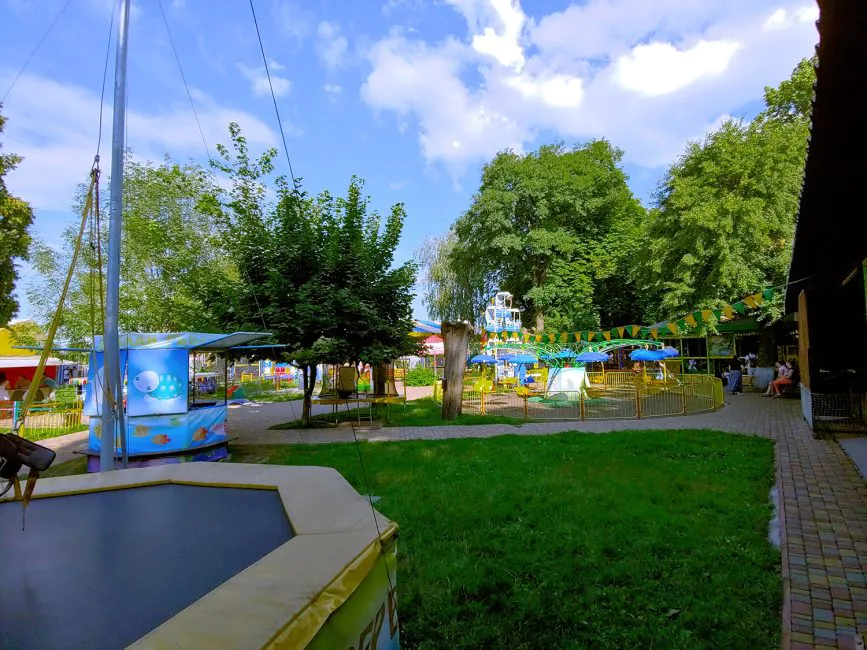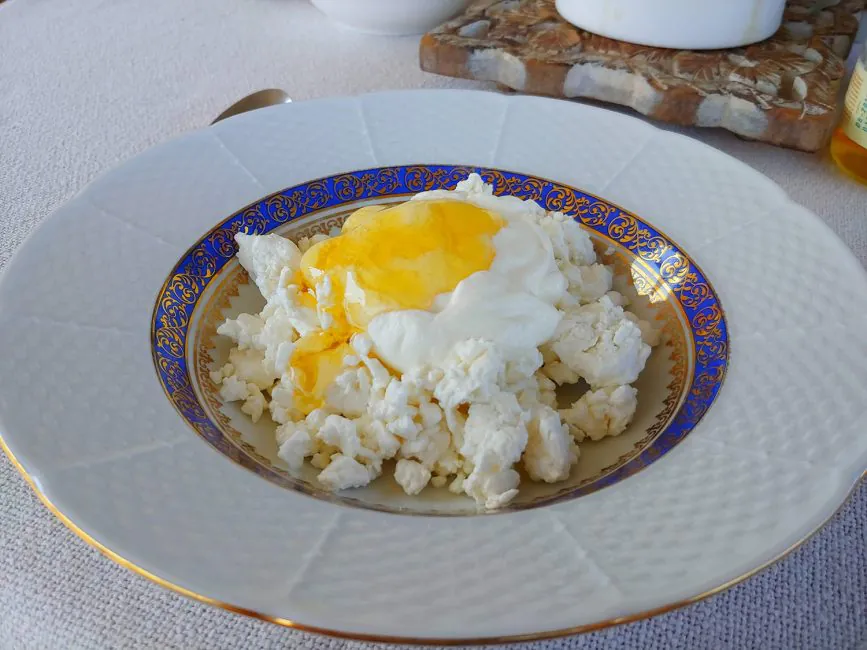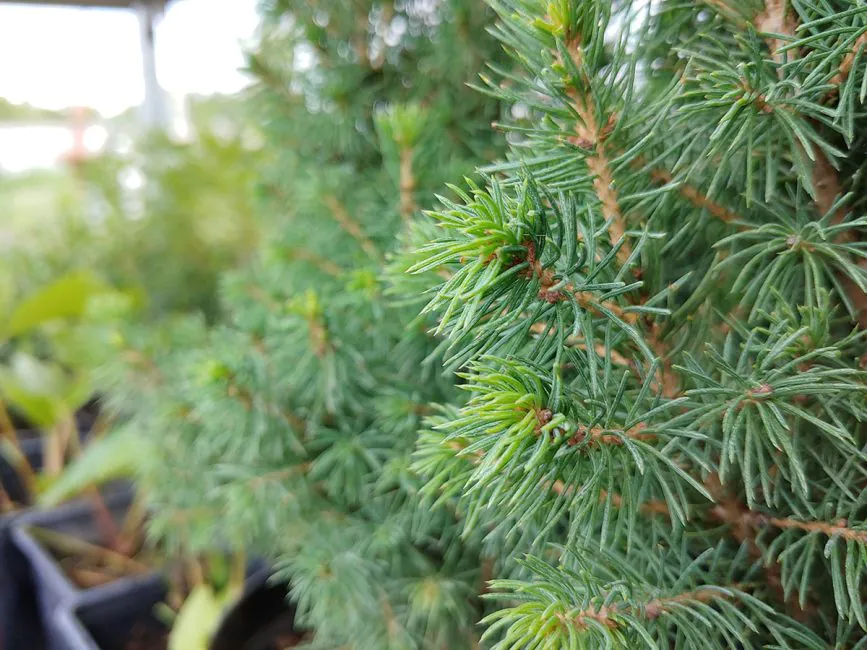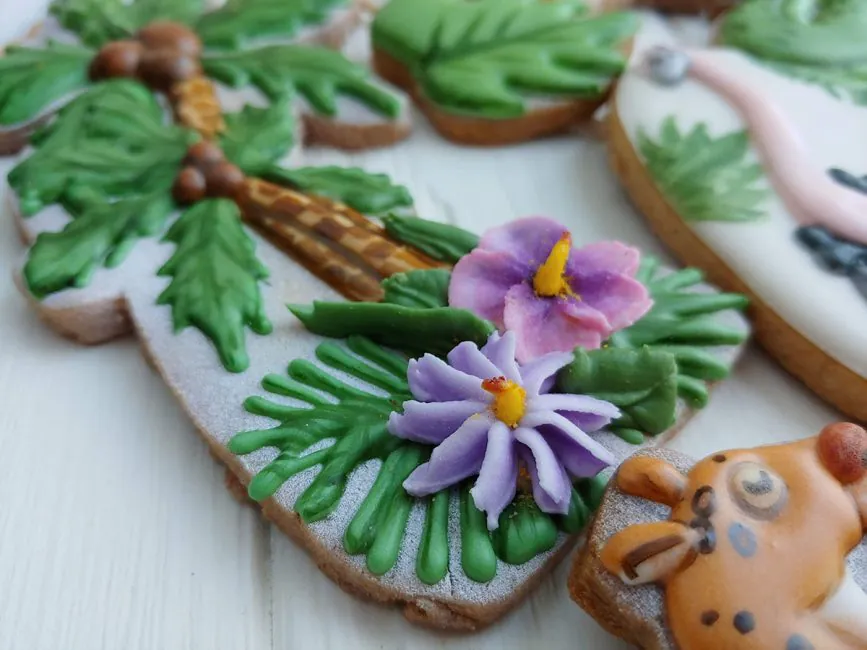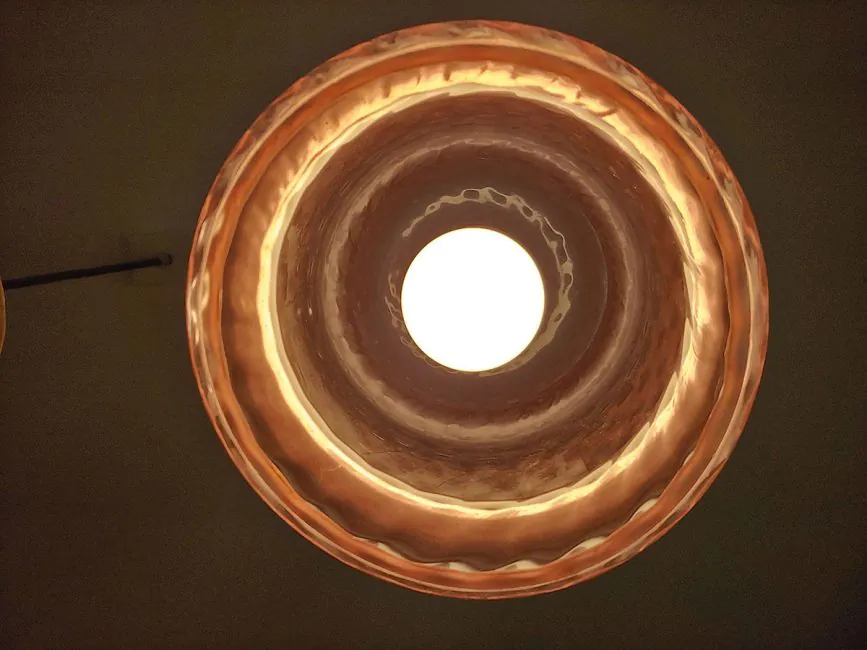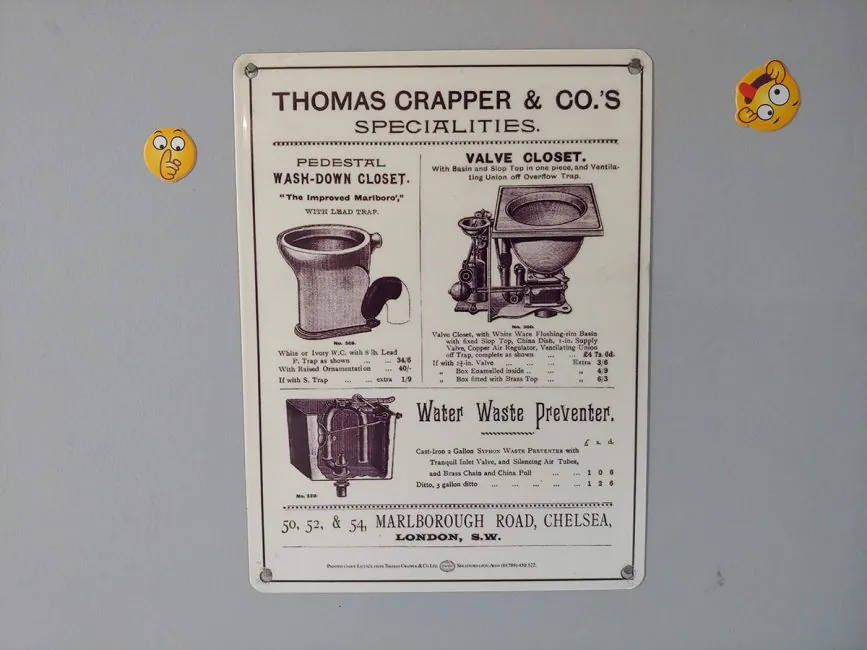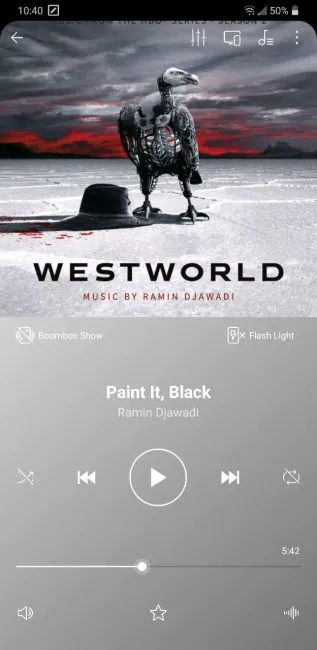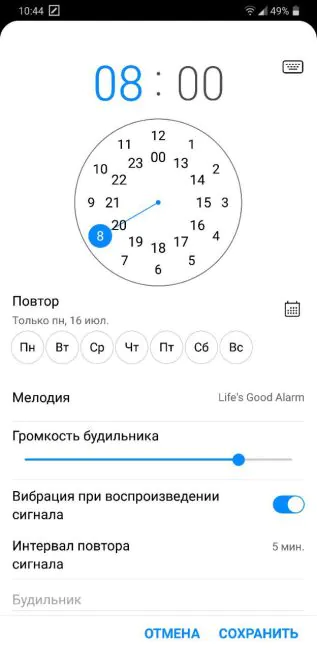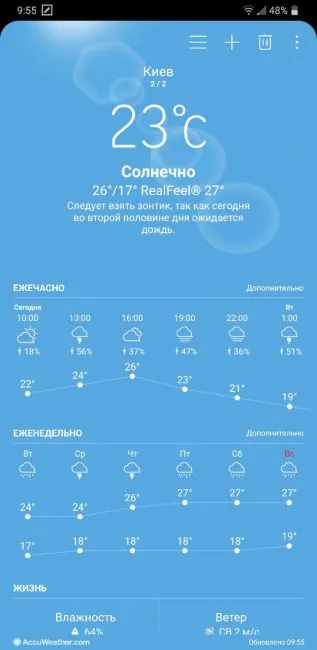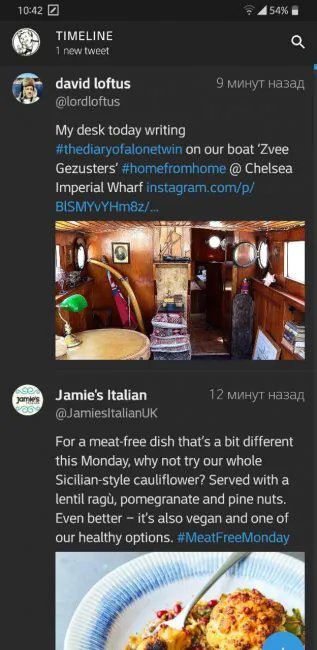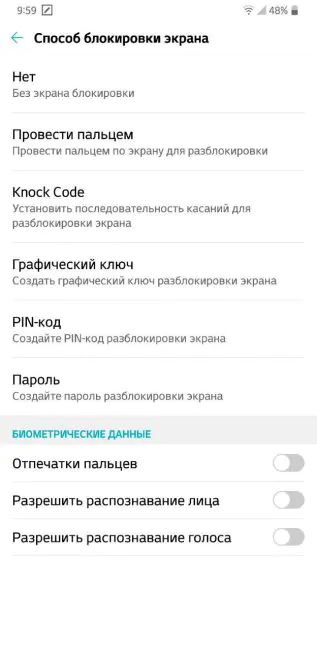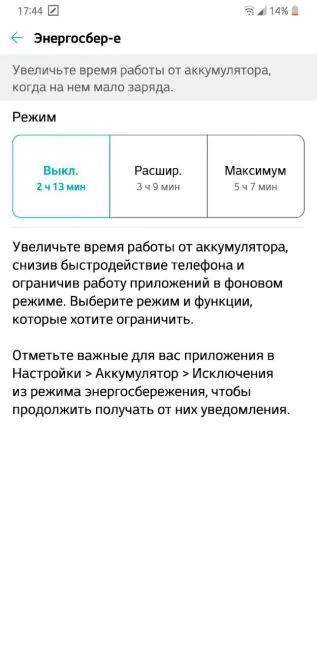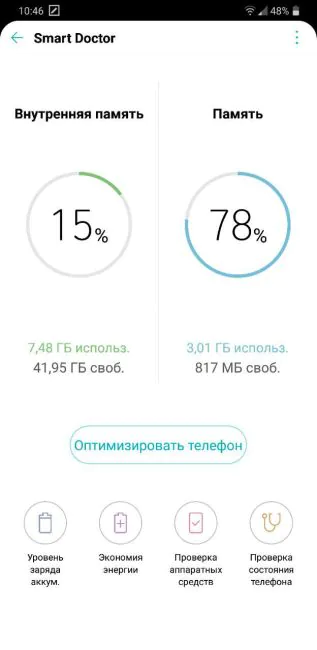© ROOT-NATION.com - Use of content is permitted with a backlink.
The last couple of years saw LG release lots of great smartphones, but not once did they score a win on the market. This year LG tried to rival the big players once again with the help of a new flagship – LG G7 ThinQ. Can it finally seduce the general public or will it, too, be thrown into oblivion with all the others? Let’s try and find out.
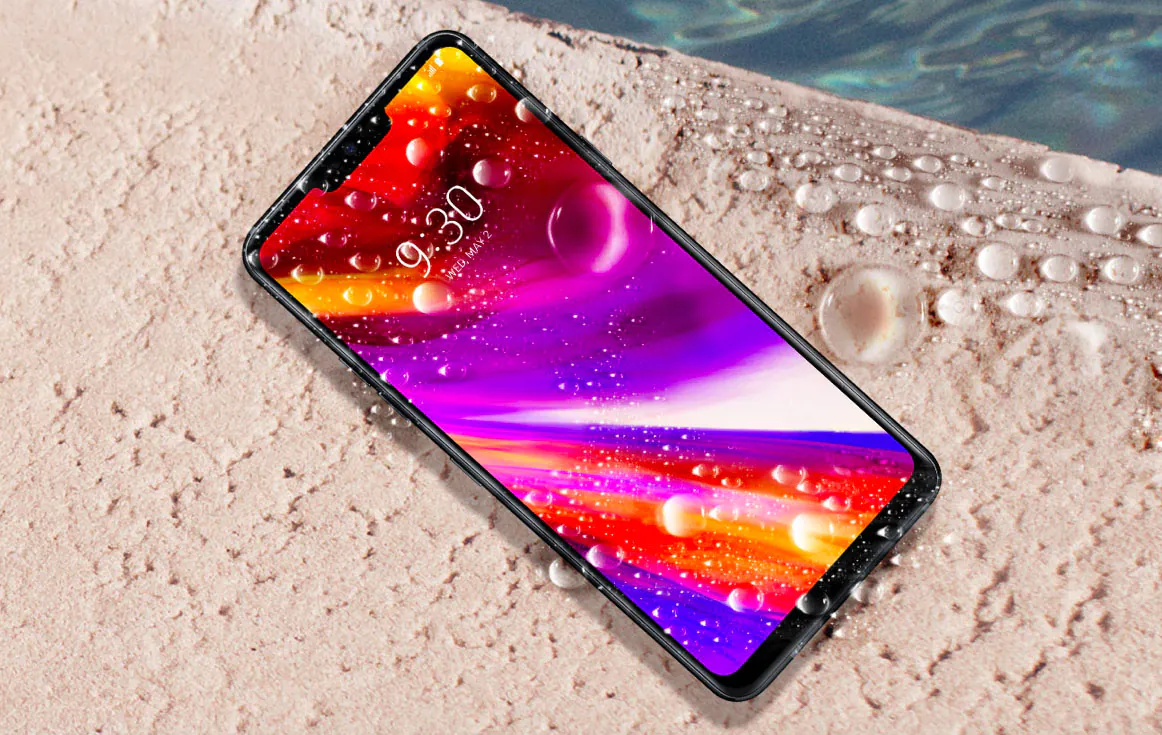
| LG G7 ThinQ | |
| Standard | GSM 850/900/1800/1900 HSDPA LTE 2100/1800/2600/800 |
| Number of SIM cards | 2 |
| Operating system | Android 8.1 |
| RAM, GB | 4 |
| Storage, GB | 64 |
| Expansion slot | microSD |
| Dimensions, mm | 153.2 x 71.9 x 7.9 |
| Weight, g | 162 |
| Protection against dust and moisture | IP68 + MIL-STD-810G |
| Rechargeable battery | 3000 мАч (несъемная) |
| Screen | |
| Diagonal, inches | 6.1″ |
| Resolution | 1440х3120 |
| Type of matrix | IPS |
| PPI | 564 |
| Brightness sensor | + |
| Touch screen (type) | capacitive |
| CPU Characteristics | |
| Processor | Snapdragon 845 |
| GPU | GPU Adreno 630 |
| Number of cores | 8 |
| Frequency, GHz | 2.8 |
| Camera | |
| Main camera, Mp | Main: 16 (f/1.6); Second: 16 (f/1.9) |
| Video | + |
| Flash | + |
| Selfie camera, MP | 8 (f/1.9) |
| Коммуникации | |
| Wi-Fi | Wi-Fi 802.11b/g/n/ac, 2,4/5 ГГц |
| Bluetooth | 5.0 |
| Geolocation | GPS, GLONASS |
| IrDA | – |
| NFC | + |
| Interface Type | USB Type-C |
| Additionally | |
| Audio jack | 3,5 mm |
| MP3 player | + |
| FM radio | + |
| Body | monolith |
| Housing material | metal, glass |
| Keyboard type | screen input |
What’s in the box
Our test sample had neither accessories nor the box so we can only guess what comes with the device. Our guess would be that besides the phone the box will include a charger, a USB Type-C cable, a SIM eject tool and different documents.
Design, ergonomics and materials
In my opinion, the most controversial side of the LG G7 ThinQ is its design. G series from the Korean company has always looked dapper and original. The leather back of G4, the brutal G5’s camera protuberance and the smooth edges of G6 gave a certain uniqueness to the lineup. They were memorable and stood out from the crowd (although they did not sell very much). In the case of G7, the Korean giant decided to more or less copy iPhone X, just like its other rivals Huawei, Xiaomi and ASUS. Nobody wanted the notch, but here it is.
Sure, in the growing bezel-less world there’s little space for fantasy when it comes to smartphones – that is, if we talk about the face plate. But on the back there’s tons of space, do whatever you want! But there’s nothing original or fresh about G7. I can’t even tell whether it’s an LG phone or something else. Only the logo helps out. Where’s the personality gone?
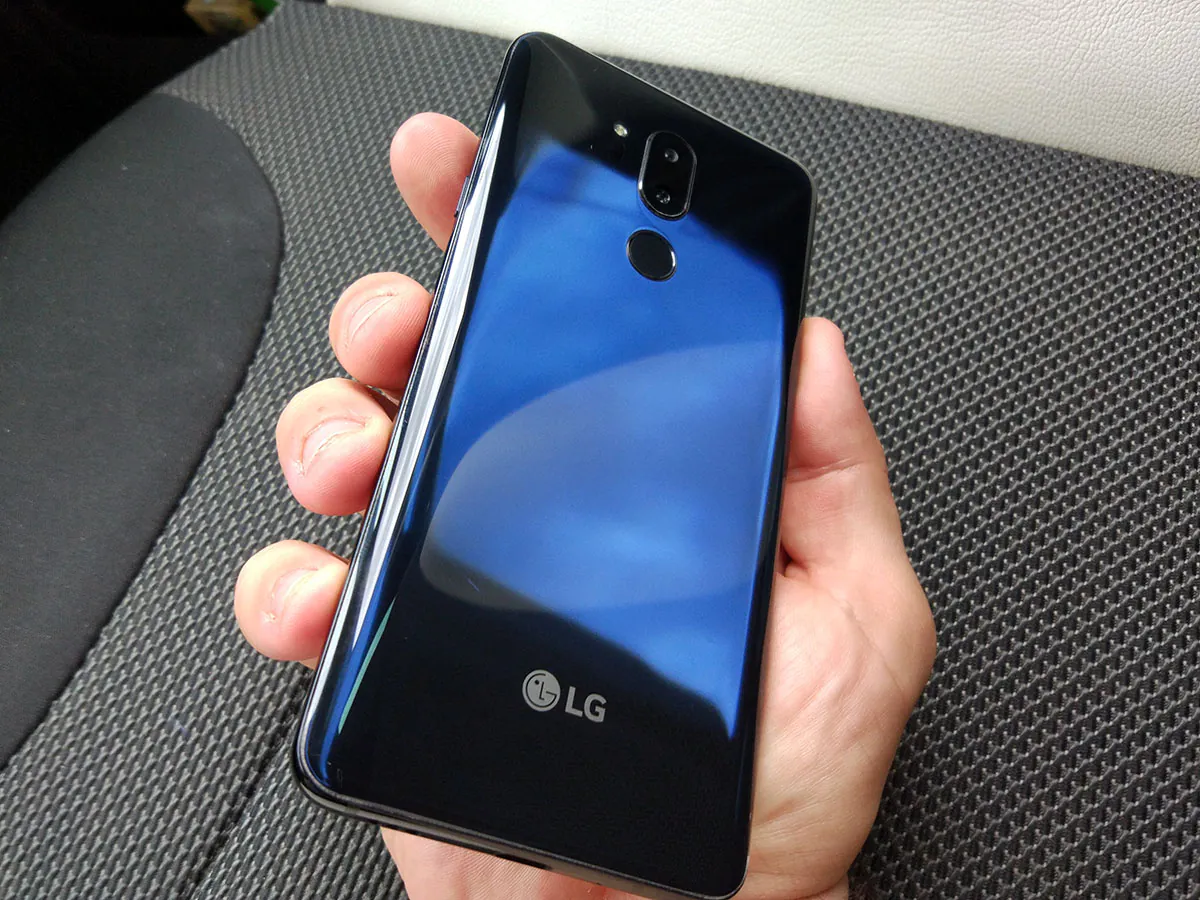
The glass covering the rear side looks ambiguous. If you hold LG G7 ThinQ at a certain angle, you can see the original color of the smartphone. For example, our option – Moroccan Blue – looks very cool! The only problem is that you can hardly see that beauty. You can see lots of fingerprints on the glass, but true colors show themselves only when the sun shines just the right way.
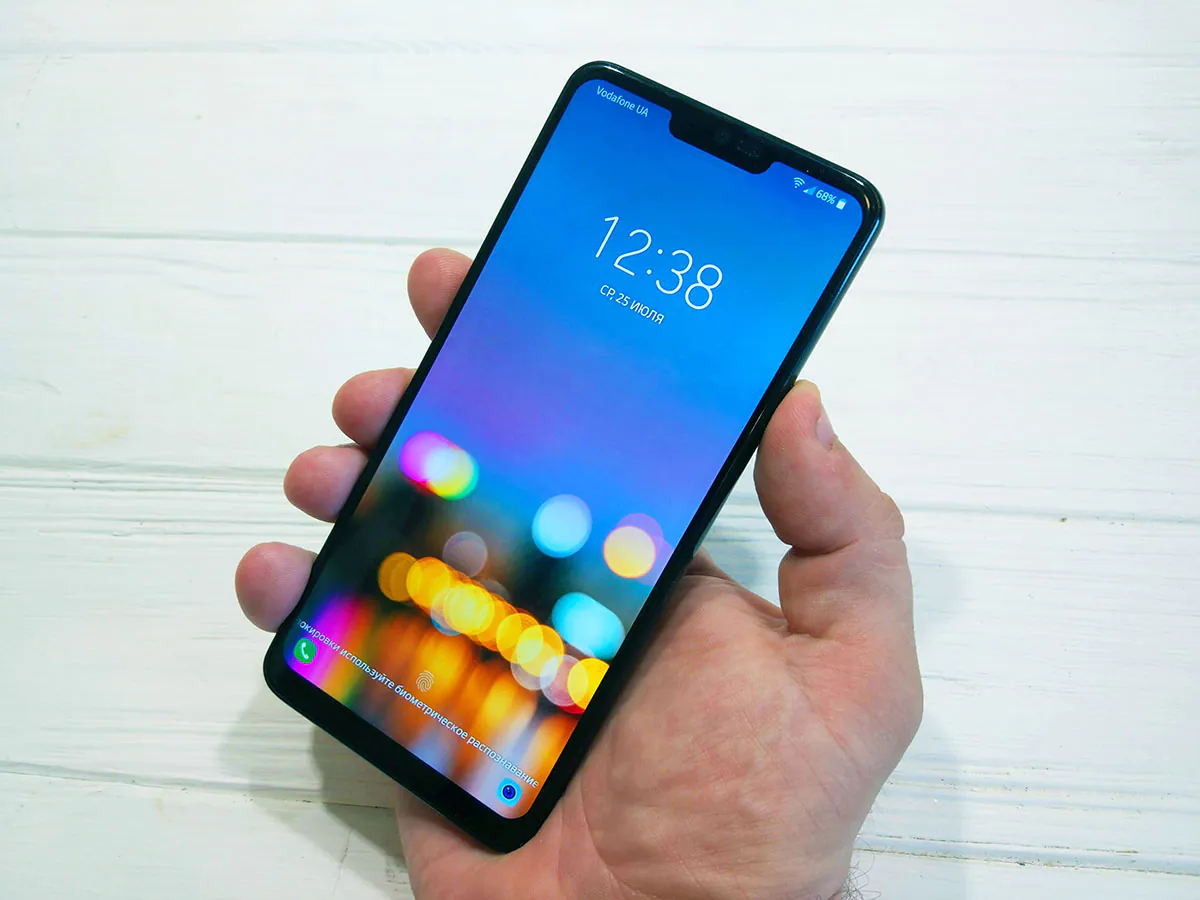
As for build quality and materials, then everything is top notch. There’s your traditional “sandwich” design: the top and bottom is glass, and between them a metal frame. LG G7 ThinQ is P68 dust- and water-resistant, in addition, the smartphone is certified Military Standard 810G. This means that the G7 body has increased resistance to external influences (impacts, falls, scratches, etc.).
Elements’ Configuration
On the front panel we have a large display with rounded corners and a notch. It houses a peephole of an 8-megapixel front camera, light and proximity sensors, an earpiece speaker, and an LED indicator for notifications.

At the back, you can find a slightly protruding block with two cameras: the main 16-megapixel + 16-megapixel wide-angle. To the left of the cameras is a flash and a laser focusing unit. The fingerprint reader is traditionally located under the camera unit. The latter works perfectly, with quickness and precision. Unlike LG G6, now it’s just a scanner, and the power button has moved to the right side. The button is nice to press, with pleasant click.
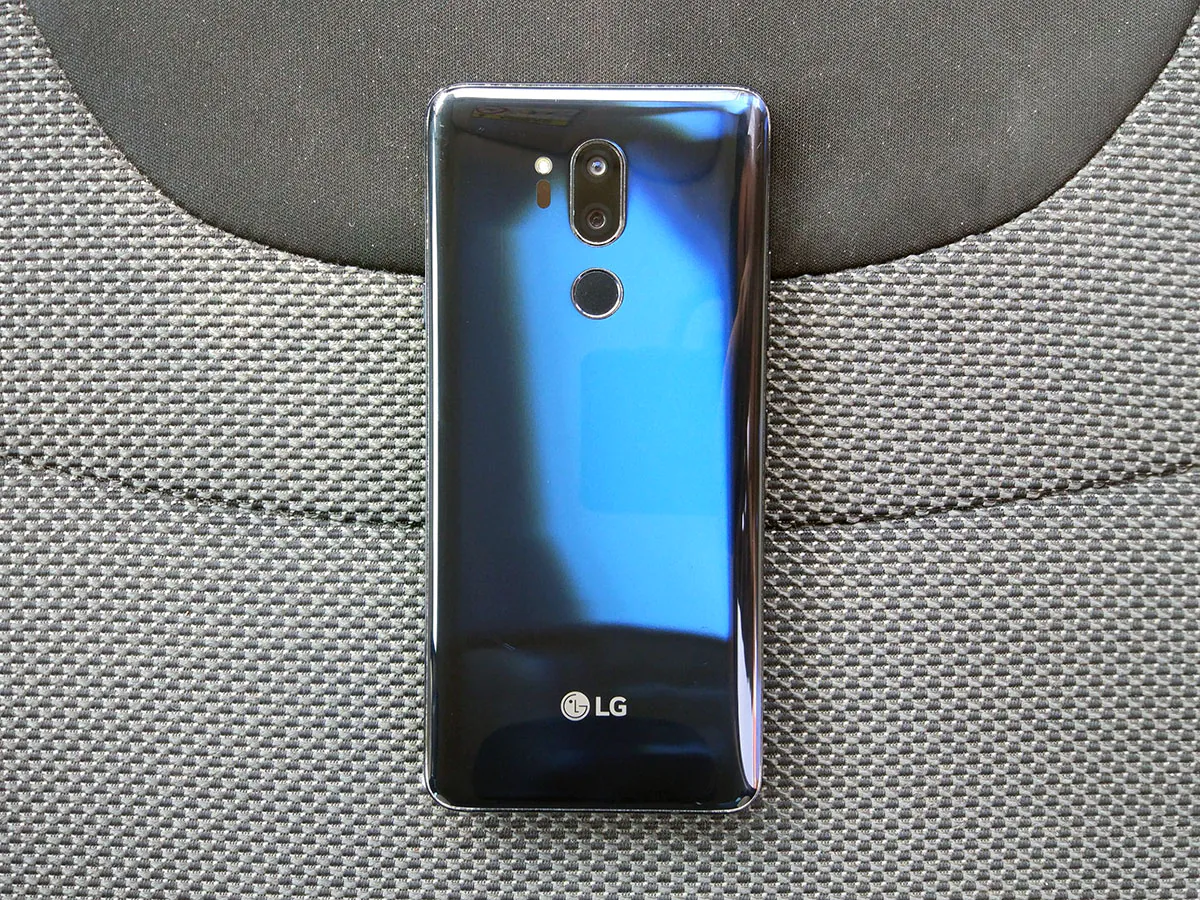
On the left side there are three buttons. Two separate – to adjust the volume. A little lower is the launch button of Google Assistant (innovation from LG). Pretty exotic solution, in my opinion. The assistant was already running perfectly via soft or through voice control. Moreover, G7 LG added the ability to recognize the voice at a long distance of up to 5 meters in noisy conditions. In general, I have no idea why put a separate button for the Assistant. And no, you can’t remap the button. Let’s hope G8 fixes that unpleasantness.
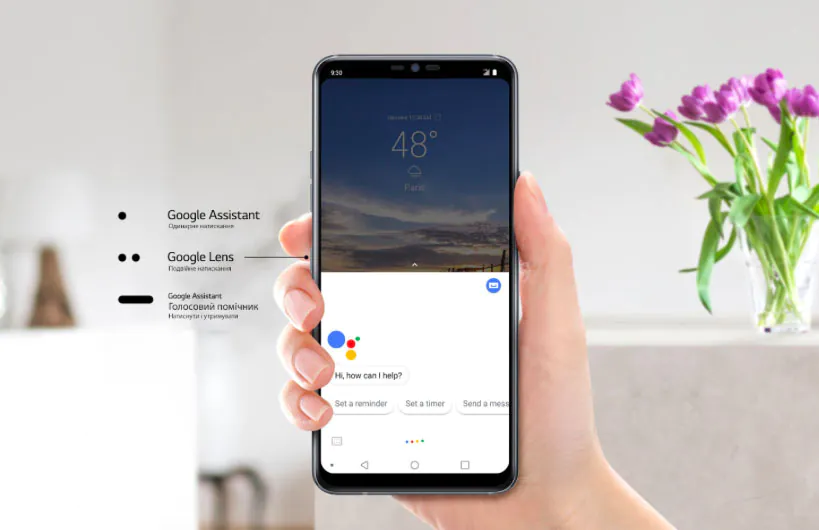
Let’s look at the bottom end. LG refused to follow the latest technological trends and decided to save the good old 3.5 mm connector (thanks a lot). To the right there is a USB Type-C connector and slots of the main speaker. We’ll talk more about the latter later. It’s worth it!
On top are: a combined nanoSIM + microSD slot and an additional microphone.
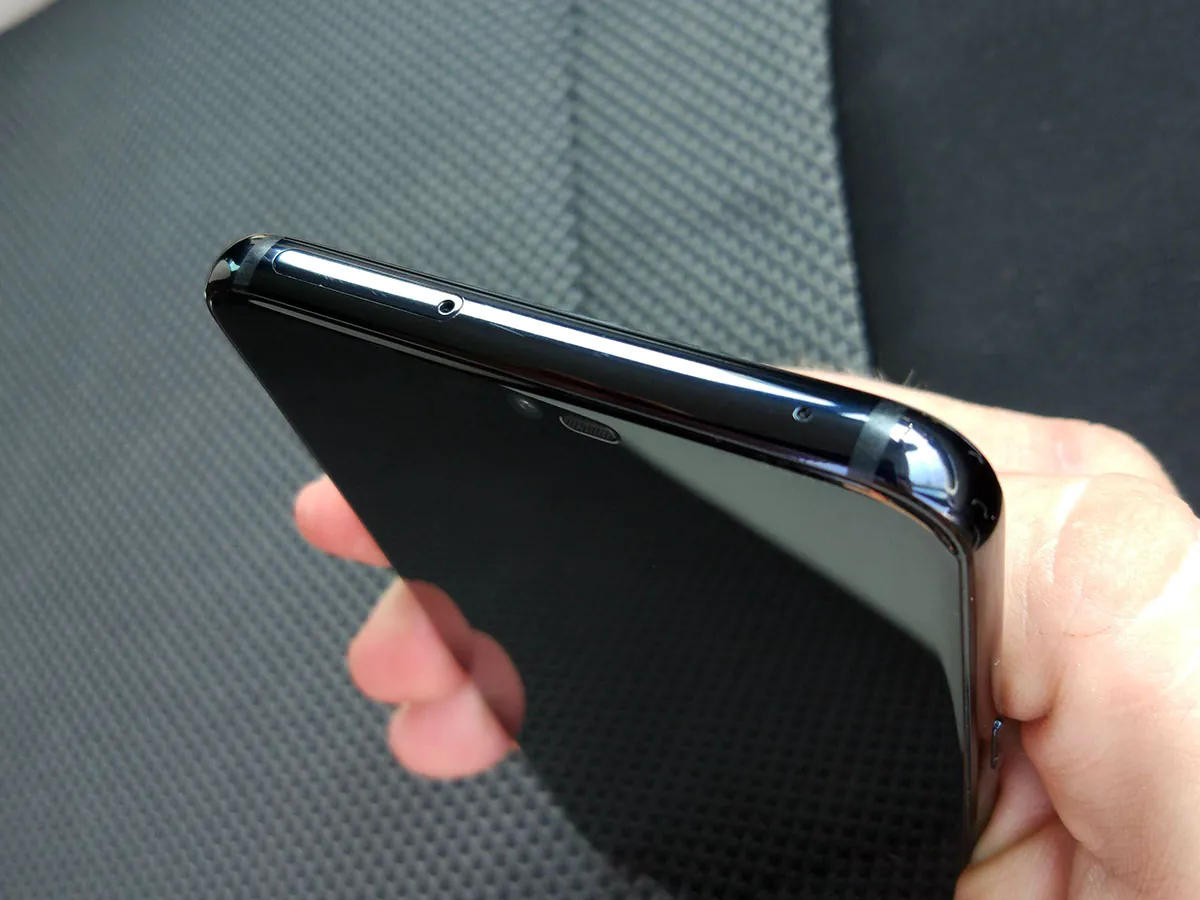
Screen
Now there’s something worth mentioning. LG G7 ThinQ is equipped with a 6.1-inch IPS screen with a resolution of QuadHD + (1440 x 3120 pixels). Huge improvement over G6 and V30 / V30S. Also, the screen boasts a significant density of pixels – 564 PPI. As for the brightness, everything is also fine. According to the manufacturer, LG G7 ThinQ gives out all 1000 nits and as a result even under direct sunlight the information on the smartphone’s display is perfectly legible. Here, however, it is worth noting that to such a high brightness rate the screen goes only on sunny days. The rest of the time, the system deliberately lowers the level of maximum brightness for energy efficiency.
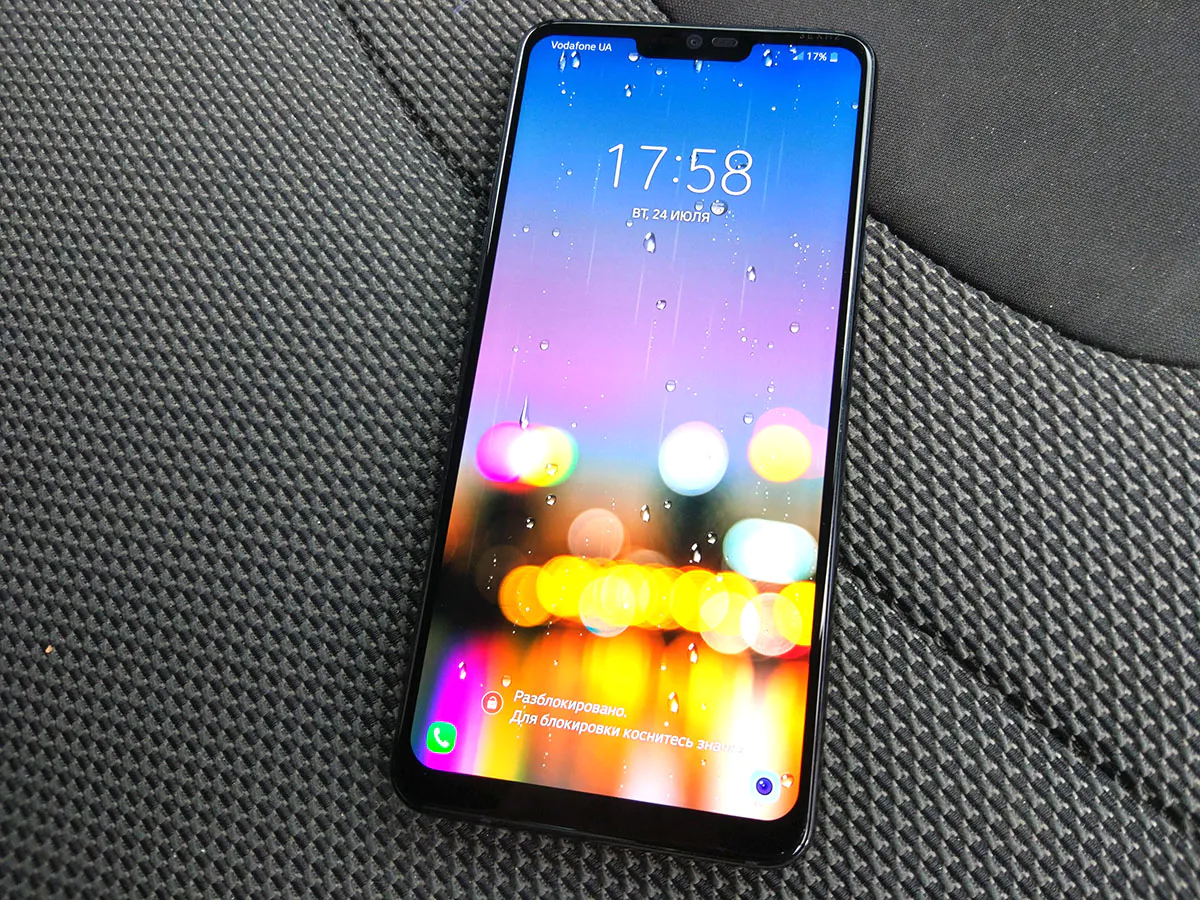
The dreaded notch can be hidden in the settings in the New Second Screen tab. You can also play with the color and round edges. Personally, I have nothing against the notch.
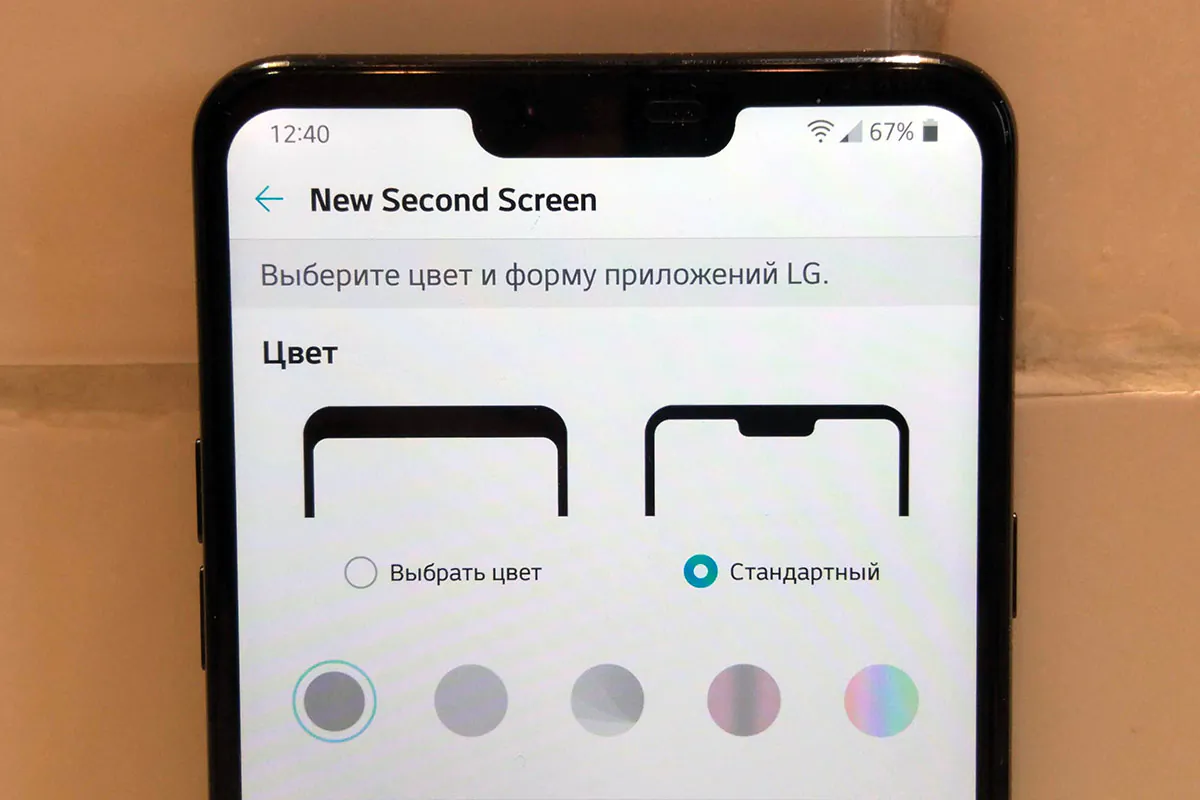
Despite the IPS screen, the LG G7 ThinQ kept Always on Display. You can choose the brightness, scheduled powering on, change the dials and so on. Also, you can add a picture to the displayed time.
Now to cons. Quad HD matrix is great, but it requires tons of energy. If you need to increase the phone’s operating time, you should manually lower the screen resolution to 1560×720 or 2340×1080 pixels.
In short: bright, sharp and clear (if not the sharpest at the moment among the flagships) screen, which is very pleasing to the eye. It will be very hard for me to go back to AMOLED Full HD of my own smartphone.
Communications
In the case of LG G7 ThinQ, everything is typical: two SIM cards supporting 4G LTE, VoLTE and VoWiFi technologies, NFC, Ac DualBand Wi-Fi, Bluetooth version 5.0 with aptX and aptX HD support. Regarding navigation, G7 traditionally works with GPS and GLONASS. It finds satellites instantaneously; the accuracy is about 4-6 meters.
Cameras
LG G7 ThinQ is similar to LG V30S ThinQ and G6 in terms of camera layout – the standard module goes in conjunction with a wide-angle. As for the numbers, the first module has 16 megapixels and aperture of f/1.6, the second – 16 megapixels and a f/1.9 aperture. Unfortunately, the focus is still fixed. The front camera has an 8-megapixel sensor and f/1.9 aperture.
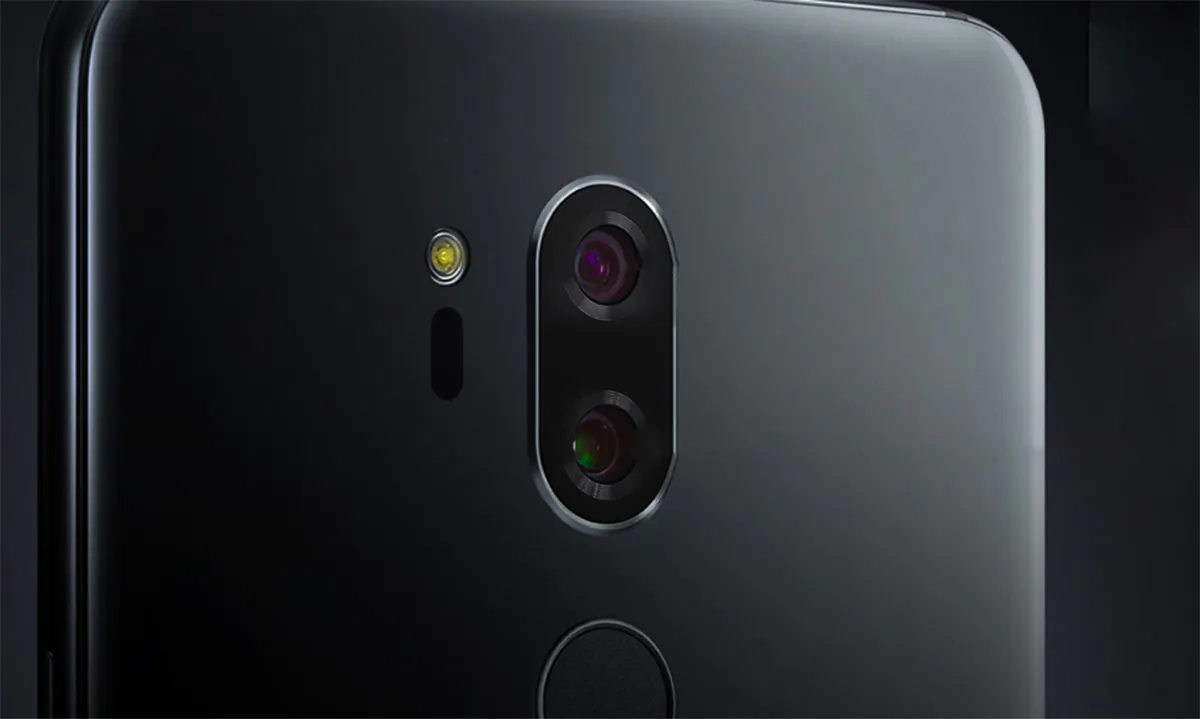
A very interesting feature of the LG G7 is the built-in AI. In fact, this is the same camera as in the V30S ThinQ with the addition of several chips. How does it work? When the AI Cam mode is on, the module tries to identify the objects located in the frame and adjusts the settings to create the perfect picture. The complete list of AI Cam presets includes: Children, Animals, Drinks, Fruits, Sky, Beach, Snow, Group of people, Bad lighting, Night sky and Text. After the camera applies one of these templates to your picture, you can adjust it additionally by working with the contrast, saturation, etc.

Sounds impressive, doesn’t it? In practice, the AI Cam mode does not always work. First, the system often misinterprets the objects in the frame. Plus, if there are several objects in front of the camera, the AI Cam recognizes the wrong one. Artificial intelligence easily recognizes animals, people, food and urban areas. In photos of food, color is emphasized, red color deepens, saturation increases. Pictures of the city get a great depth and contrast. Children and animals look sharper and clearer. Examples of photos taken in AI Cam mode can be seen below:
The selfie camera works perfectly. Selfies turn out good and there’s nothing to complain about. The bokeh effect works fine as well.
As a result: with sufficient illumination, G7 makes decent photos. Especially if you spend a little time and play with the settings of the manual mode. The smartphone records video in the resolution of 4K at 30 fps, 1080p at 60 fps. The quality is very good, the dynamic range is wide. It is also worth noting that LG G7 ThinQ is one of the few flagships that can record video in manual mode, which allows achieving excellent results even in the dark.
Photos in daylight:
Photos indoors:
PHOTOS AND VIDEO IN FULL RESOLUTION
Performance of LG G7 ThinQ
LG G7 ThinQ is equipped with the latest Snapdragon 845 processor, which is also installed in such flagships as ASUS ZenFone 5Z, HTC U12, OnePlus 6 and Xiaomi Mi 8. The fastest chip at the moment works in conjunction with the powerful graphics processor Adreno 630, which makes the phone a true behemoth, capable of handling even the hardest tasks. Everything works smoothly. Any games also run without problems on the highest graphics settings.
The device has 4 and 6 GB of RAM, depending on storage: 64 and 128 GB, respectively. As for heating, everything is standard. Under normal conditions, there’s nothing to talk about. With tough tasks, the back is slightly warmer.
Now let’s run some tests.
Results in benchmarks:
- AnTuTu = 260400
- GeekBench CPU Single Core = 2440
- GeekBench CPU Multicore = 8551
- GeekBench COMPUTE = 14258
- 3Dmark Sling Shot Extreme = 4707
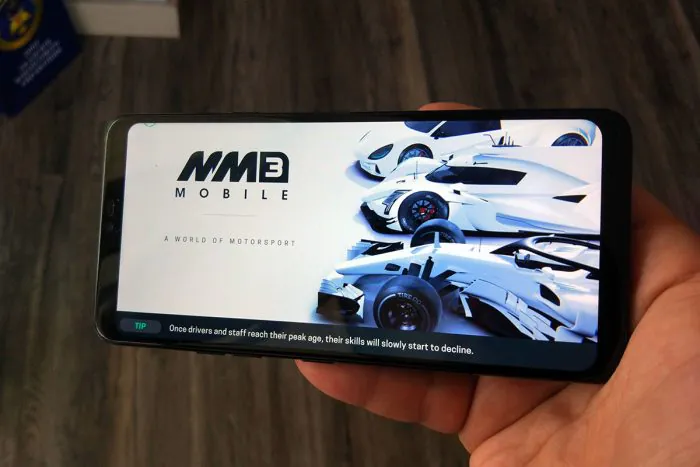
Sound
The strongest side of LG G7 ThinQ is its musical capabilities. The first thing that the manufacturer pays attention to is the Boombox Speaker. The design solution, created to make the sound of the main speaker more voluminous and loud. With the help of a specially increased acoustic resonator, sound is fed to the back of the smartphone. Thus, the LG G7 body oscillations are transmitted to the surface, for example a table, and make the sound louder.
The second musical feature of the device is the Saber ES9218PC digital-to-analog converter from ESS Technology, supplemented with DTS-X Virtual Surround Sound technology. All these technical features make LG G7 ThinQ the most interesting smartphone for music lovers. The sound in the headphones is clean, loud and, as they say, juicy. The only thing to remember is that you will really enjoy the sound of the G7 with good headphones. Ordinary cheapo headphones are not good enough.
It’s worth mentioning that LG G7 ThinQ has radio and supports Master Quality Authenticated (MQA) audio format, which will allow listening to music from Deezer and Tidal services in high quality.
Software
LG G7 ThinQ runs on Android 8.0. Upgrading to Android 9.0 is planned. LG UX version 7.0 works immaculately; it’s light and simple. In my opinion, the shell from LG id one of the best among the likes of Samsung Experience, EMUI, MIUI, etc.. It is not overcrowded, structurally repeats the stock Android and only adds a few useful features.
For example, the “Game” function, thanks to which the system can automatically put any game on pause, as soon as it understands that you, for example, have been distracted and stopped playing.
Among the built-in applications it’s worth noting the excellent voice recorder, which is not only able to write sound in FLAC format, but also can record concerts with intelligent suppression of noise.
Battery life
LG G7 ThinQ has a battery with a capacity of 3000 mAh, which is 300 mAh less than in last year’s LG G6. I think that the company decided to reduce the battery capacity primarily due to the use of an energy-efficient Snapdragon 845 processor and an optimized system.
In normal use, the smartphone easily survived until late in the evening with approximately 20% of the battery left. As load increases, this figure is expected to decrease. In my case, with active testing (games, music, internet, navigation, camera), the G7 worked for 8 hours.
The smartphone supports the quick charge function. Up to 50% of the battery was charged in 30 minutes. Up to 100% – in 1 hour 10 minutes.
Verdict
You can clearly see the Koreans trying to do anything possible to make LG G7 ThinQ capable of fighting the giants like Samsung Galaxy S9, OnePlus 6, Xiaomi Mi 8, and Huawei P20 Pro. The device has a sturdy body with great build quality, a fantastic display, amazing sound, 3,5 audio jack and brilliant cameras with AI support, even if it doesn’t always work. Sure, the design is so-so, as is its battery life. The body is also a fingerprint magnet.
Overall, it is a great device with lots of pros and a couple of tiny cons. I liked it a lot. The smartphone is awesome – surely it can fire up LG? Can it fight its notable rivals? The time will tell.
LG G7 ThinQ |
|
Liked:• Build quality and structural strength |
Disliked:• It’s a fingerprint magnet |



